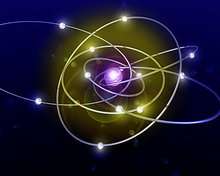Quantum breakup is no heartbreaker

Getting together and breaking up is hard to do, but splitting a quantum couple is even more difficult.
In this case, the couples involve pairs of quantum bits, or qubits, and each bit represents a piece of information. Controlling quantum bits so that they communicate, or couple, with some but not all of the other quantum bits is one of the fundamental problems in developing a quantum computer, said Franco Nori, physics professor at the University of Michigan, and also with RIKEN, in Japan.
The inability to control and direct qubits and turn their interactions on and off selectively makes it impossible to do quantum information processing.
Quantum computing is promising because such computers—if developed—will process information thousands of times faster than conventional computers, but researchers are still a long way off from building the first large-scale quantum computer.
Nori’s team proposes a new method to control coupling and de-coupling by tuning the frequency of qubits. Simply put, qubits in the same frequency communicate, those on different frequencies do not—think of interconnected microscale radios.
“This tuning frequency method should facilitate the implementation of quantum information processing by using superconducting quantum circuits,” Nori said.
The circuits may be scaled up to many qubits by applying certain external frequencies to the qubits. Those qubits with the correct frequencies are allowed to connect through the line.
“Similarly to a radio, qubits can be "in tune" with each other or out of tune, and thus decoupled,” Nori said. “Choosing appropriate frequencies requires varying these frequencies, so the radio can tune to different stations at different times. Similarly, qubits can tune to different qubits at different times by varying the frequency of the applied magnetic field.”
The paper, “Controllable Coupling Between Flux Qubits,” will be published online Feb. 15 at ������Ƶical Review Letters, the Journal of the American ������Ƶical Society.
Source: University of Michigan















